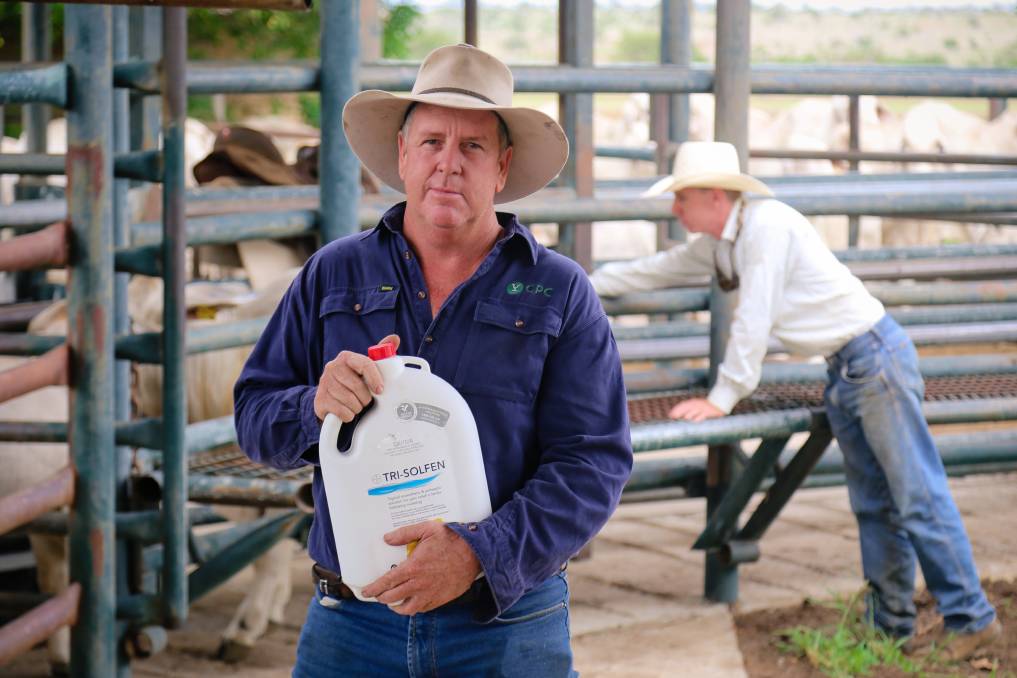After seeing lambs successfully injected with the pre-operative pain relief compound, Xylazine, near Goulburn in New South Wales last week, Mr Oppenheimer said any on-farm logistical issues could be overcome.The compound Xylazine is being trialled by the University of Sydney Veterinary School in partnership with the creator of the post-operative Tri-Solfen mulesing pain-relief spray, Animal Ethics, and research partner, Bayer.
“It just shows how the sheep and wool industry can be proactive and solve some of the concerns of consumers and animal welfare lobbyists,” Mr Oppenheimer said.
“We can’t avoid the animal welfare lobby, and things like the live export debacle show how these issues are with us and can interfere with our trade.
“For less than 30 cents – and a bit of thinking to get the procedure implemented in the yards – I am sure that growers will adopt it,” he said.
Depending on trial results, the company hoped to have a product ready for release within 12 months. The pre-operative Xylazine treatment is expected to involve an intramuscular injection in lambs about 20 minutes before any surgical procedure takes place. Tri-Solfen is applied after any surgical procedure.
“It doesn’t require any extra labour, you just have to be a little bit better organised,” Mr Oppenheimer said.
Pre-operative Xylazine pain relief would be a great breakthrough if a dose rate could be set and it did not need further registration, he added.
However, Sheepmeat Council of Australia president, Kate Joseph, believed the potential double-handling of lambs would be “totally impractical”, and might be more stressful to the animals.
She was concerned about the possibility of meat damage with an intramuscular injection, and said ideally any injections were given to sheep high up on the neck.
“If they are going to do something it has got to work immediately, and have had all the testing done with withholding periods and export slaughter intervals.
“It must be something where you only have to handle them once.”
Ms Joseph said she recognised the need for producers to think about options for surgical mulesing, tail docking and castration.
“For it to be accepted, the options have to be cheap, practical and realistic.”
Animal Ethics director, Meredith Sheil, said the Xylazine research with the University of Sydney was not working on a quicker acting pre-operative analgesic “at the moment”, nor looking at developing a subcutaneous injectable.
Dr Sheil said an effective pre-operative treatment that could be given as the lambs were put in a cradle “obviously would be ideal”, but most of the medications that acted immediately were probably not safe, effective or practical for farmers to use without a veterinarian being present.
“There is no indication that Xylazine causes any sort of meat problem, such as ulceration.
“That’s just a red herring, completely out of the blue.”
Dr Sheil said Xylazine is used already in sheep and other animals as a sedative administered intramuscularly on farms and in veterinary practices. Xylazine was approved to be given intramuscularly and wasn’t an immunogen designed to elicit a reaction.
“It certainly wouldn’t be out there if there were those sort of concerns.”
It would not be necessary to follow Xylazine-treated lambs through to slaughter to assess any carcase effects, she said. Dr Sheil believed effects of Xylazine treatment in sheep would have been covered in the initial registration process.
“If medications designed to be given subcutaneously were given intramuscularly there is a potential for muscle damage.
“Medications aren’t registered for use in animals where they cause unintended damage like muscle ulceration.”
RSPCA Australia’s scientific officer for farm animals, Melina Tensen, said producers would not be waiting half an hour for the sedative effect to work before operating on all their lambs.
“It’s only the initial batch you have to wait for and once you get started you can be working on the lambs already sedated in the cradles, while the next batch is in the race being sedated.”
Animal Liberation executive director, Mark Pearson, did not believe the stress on lambs would be increased by getting an intramuscular injection before being lifted into a cradle for mulesing, castration or tail docking.
Dr Sheil said Animal Ethics would not be promoting a pre-operative analgesic treatment for sheep unless it was safe, effective and reliable.
